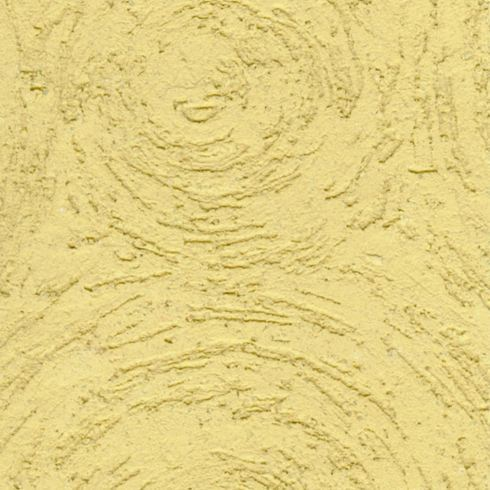Color difference is a common quality defect in the decorative coatings industry. Its causes are multifaceted, primarily related to the raw materials used and the dyeing process. With the increasing use of decorative materials in the construction industry, the color requirements for decorative coatings are also becoming increasingly demanding. Spectrophotometers are used as color measurement instruments to meet all user needs.
Causes of color difference in decorative coatings
1. Different batches of paint are mixed by different colorists. The sensitivity of each colorist’s eyes is always slightly different, and there may be some bias in the color.
2. Pigments from different batches vary in surface condition, particle size, and other factors, resulting in different hues. For example, carbon black is the most widely used pigment in paint. When its particle size decreases or its surface area increases, its blackness increases, absorbing more light and reflecting less, making it appear darker. Using different batches of base paint and different batches of color paste…
3. Small-sized color plates are more likely to produce errors. When adjusting colors, relatively small-sized color plates are used. The dryness and thickness of the paint film on the test plate are also important factors that cause color differences.
4. Background differences. An object placed against a bright background appears darker than one placed against a dark background. This is called the contrast effect. Therefore, if a color palette is placed against different backgrounds for comparison, color differences are very likely to occur.
Control of color difference of textured decorative paper using spectrophotometer

Spectrophotometers operate by illuminating a sample with a light beam through a specific optical path. This light is then received by a series of detectors, which reflect the light from the sample and convert it into an electrical signal. The spectrophotometer market is now quite robust. Basically, different types are categorized based on their functional environments. In other words, no matter what color difference you want to measure, you can buy a corresponding spectrophotometer on the market. Spectrophotometers used in different environments have different structures. Spectrophotometers of different structures use different color measurement conditions, namely, different optical paths, and may produce different measurement results.
To accurately assess color variations in decorative coatings and control the quality of textile products, spectrophotometers can be used. Spectrophotometers make color manipulation of decorative coatings more convenient. We use spectrophotometers and computer color matching systems to modify the color of decorative coatings, thereby minimizing color variations within the same batch.
A spectrophotometer can accurately assess the degree of color difference between two products. It automatically compares the color difference between the sample and the product being tested, and then outputs three sets of CIE-LAB data and four sets of color difference data after color comparison: ΔE, ΔL, Δa, and Δb.
The principle behind this approach is to measure the sample’s tristimulus values (x, y, and z) by integrating them, and then calculate parameters such as the sample’s chromaticity coordinates. Typically, a filter is placed over the detector to correct the detector’s relative spectral sensitivity (S(λ)) to the CIE-recommended spectral tristimulus values (x(λ), y(λ), and z(λ). When these three light detectors receive light, the sample’s tristimulus values (X, Y, and Z) can be measured with a single integration. The filter must meet the Luther condition to accurately match the light detector.
Decorative paint manufacturers can color decorative paints with large color differences based on the data measured by the spectrophotometer, thereby ensuring product color consistency and reducing corresponding losses.
Preventive Measures for Controlling Color Difference of Textured Decorative Paper Using Spectrophotometer
1. Use spectrophotometer to strengthen the inspection of paint purchases. Topcoats of the same color should be produced by the same manufacturer.
2. The paint should be diluted appropriately and not too thin.
3. Prevent paint from floating and bleeding.
- Clean tools carefully before painting, especially the paint pipes when changing colors to avoid color mixing.
Color of Biscuit paint
Biscuit paint color is a soft and modestly neutral shade of tan and grey beige. It is commonly used to paint walls, furniture ornaments and ceramics in order to create an atmosphere that is calming and simple. It serves as a blank slate specially suited for a variety of interior design styles without overwhelming the color scheme. So it is important that the products be rigorously measured in terms of color uniformity. For flashing biscuit shades are very dependent on lighting and the finish of the surface.

Conclusion
Much of As Seen on Television precipitated from the convergence of multiple artistic disciplines. Take for example the versatile tile. One can note its delightful beige and the visual perception of the tile biscuit. The tile color biscuit does not just exist, it has weight. The hues in such designs never clash with each other and reading the tile does not require interpretation.
Other than the three tools in the title, modern devises like spectrophotometers also assist in measuring biscuit. This ensures the biscuit color is absolutely true regardless of the surfaces, materials, and light.
Work With 3NH Experts. We Know Color Management for Paint and Coatings
Precision is a non-negotiable factor in painting & coatings. 3NH is one of the finest providers of paint measurement instruments and software solutions to manufacturers and retailers worldwide. With us, you will get the exact color regardless of the application.
Why choose 3NH?
● Comprehensive product range: From benchtop and portable paint spectrophotometers to paint colour analysers and gloss meters.
● Accuracy and consistency: High-precision tools backed by global calibration standards.
● Easy integration: Seamless compatibility with paint matching software and color matching machines.
● Support and training: Ongoing assistance for hardware use, software training, and custom integration.
● Tailored for industries: Whether it’s automotive paint testing, industrial coatings, or consumer paint products, 3NH has tools for every use case.

